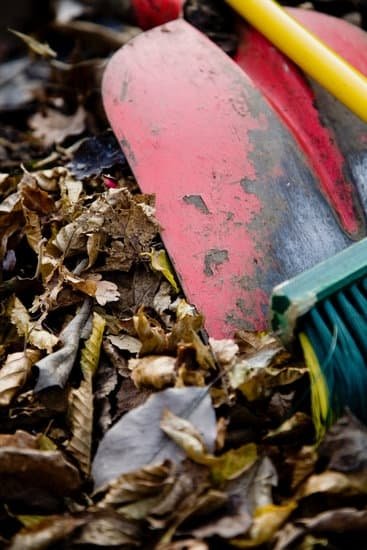When it comes to gardening in the Southern region, one must consider the unique climate and conditions that set it apart from other parts of the country. With a long growing season, warm temperatures, and ample sunlight, Southern gardens offer a plethora of possibilities for plant growth and flourishing landscapes. In this article, we will explore various southern gardening ideas that cater to the specific needs of this vibrant region.
From colorful flowers to delicious vegetables and aromatic herbs, Southern gardens are truly a feast for the senses. The rich soil and warm weather provide an ideal environment for a wide variety of plants to thrive. Whether you are a seasoned gardener or just starting out, there are endless options to choose from when selecting plants for your Southern garden.
In addition to discussing the best plants for Southern gardens, we will also delve into tips for soil preparation, creative container gardening ideas, pest control strategies, design inspirations, seasonal tasks, and sustainable practices. By embracing these aspects of gardening tailored to the Southern climate, you can create a beautiful and thriving garden that reflects the charm and vibrancy of the South.
Best Plants for Southern Gardens
Southern gardens offer a unique opportunity to grow a diverse range of plants due to the warm climate and ample sunshine. When planning your garden in the Southern region, it’s essential to choose plants that are well-suited to the conditions for optimal growth and beauty. From vibrant flowers to fresh vegetables and fragrant herbs, there are plenty of options to choose from for your Southern garden.
Flowers
For those looking to add a pop of color and fragrance to their Southern garden, consider planting varieties such as hibiscus, magnolia, bougainvillea, and azaleas. These flowers thrive in the warm climate of the South and will create a beautiful backdrop for your outdoor space. Additionally, native wildflowers like Black-eyed Susans and Coreopsis are well-adapted to the region’s conditions and attract pollinators.
Vegetables
When it comes to growing vegetables in a Southern garden, opt for heat-tolerant varieties that can withstand the hot summers. Some popular choices include tomatoes, peppers, okra, sweet potatoes, and collard greens. These vegetables not only thrive in the Southern climate but also provide ample harvests throughout the growing season. Consider planting a mix of different vegetables to create a diverse and bountiful garden.
Herbs
Fresh herbs are a must-have in any Southern garden, adding flavor and fragrance to your culinary creations. Popular herbs that do well in the Southern climate include basil, rosemary, mint, thyme, and oregano. These herbs are easy to grow and require minimal maintenance once established. Whether grown in containers or planted directly in the ground, incorporating herbs into your Southern garden is sure to enhance both your cooking and overall garden aesthetic.
Incorporating these diverse plants into your Southern garden will not only add beauty but also provide you with opportunities for fresh produce and fragrant herbs right at your fingertips. By selecting plants that thrive in the unique climate of the South, you can create a flourishing garden that will bring joy year-round.
Tips for Soil Preparation
Southern gardening ideas focus not only on choosing the right plants but also on preparing the soil to ensure optimal growth. In the unique climate of the Southern region, it is essential to pay close attention to soil preparation to provide plants with the nutrients they need to thrive.
One essential tip for soil preparation in a Southern garden is to conduct a soil test to determine its pH level and nutrient composition. This test will help you understand what your soil needs and how to amend it effectively.
Another important aspect of soil preparation in Southern gardening is adding organic matter such as compost, manure, or leaf mold. These materials not only improve soil structure but also contribute valuable nutrients for plant growth. Mixing organic matter into the soil before planting helps create a healthy environment for roots to establish and absorb nutrients efficiently. Additionally, organic matter improves moisture retention in sandy soils common in the Southern region and enhances drainage in clay soils.
Maintaining good drainage is crucial for successful gardening in the South since waterlogged soils can lead to root rot and other issues. To improve drainage, consider incorporating perlite or vermiculite into your soil mix or creating raised beds for better water flow. By ensuring proper drainage and amending your soil with organic matter, you can set a solid foundation for a thriving Southern garden that yields beautiful flowers, bountiful vegetables, and aromatic herbs.
| Aspect of Soil Preparation | Benefits |
|---|---|
| Conducting a Soil Test | Determine pH level and nutrient composition |
| Adding Organic Matter | Improves soil structure and provides nutrients |
| Improving Drainage | Prevents waterlogging and promotes healthy root growth |
Creative Container Gardening Ideas
Southern gardens offer a unique opportunity for creativity when it comes to container gardening. Whether you have limited space, want to add a pop of color to your patio, or simply love the versatility of container gardens, there are plenty of ways to explore innovative ideas in the Southern setting. One popular trend is creating vertical gardens using hanging planters or wall-mounted containers. This not only maximizes space but also adds a visually appealing element to your outdoor area.
Another creative idea for container gardening in the South is to mix different types of plants in one container. For example, pairing herbs with flowers not only adds visual interest but can also have practical benefits like natural pest control. Additionally, choosing containers with unique shapes and textures can enhance the overall aesthetic of your garden. Consider using repurposed items such as old buckets, crates, or even colorful ceramic pots to give your garden a personal touch.
When planning your Southern container garden, don’t forget about incorporating edible plants. Herbs like basil, rosemary, and mint thrive in the warm Southern climate and can be easily grown in containers. This not only adds functionality to your garden but also allows you to enjoy fresh herbs right from your own backyard. From whimsical fairy gardens to sleek modern designs, the possibilities for creative container gardening in the Southern region are endless.
| Container Gardening Idea | Description |
|---|---|
| Vertical Gardens | Create a space-saving and visually appealing display by utilizing hanging planters or wall-mounted containers. |
| Mixing Plants | Pair different types of plants in one container for both visual interest and practical benefits like natural pest control. |
| Edible Plants | Incorporate herbs like basil and rosemary into your container garden for both functionality and fresh flavors. |
Pest Control in the South
Southern gardens in the South are not immune to pests that can wreak havoc on plants and flowers. However, there are natural ways to control these pests without resorting to harmful chemicals. By incorporating some preventative measures and eco-friendly solutions, you can keep your Southern garden thriving without harming the environment.
Here are some common pests in the South that you may encounter in your garden:
- Aphids: These small insects feed on plant sap and can quickly multiply if not controlled.
- Slugs and Snails: These creatures love moist environments and can munch on leaves and flowers.
- Whiteflies: They feed on plant juices, leaving behind a sticky residue that attracts mold.
To combat these pests in your Southern garden, consider implementing natural pest control methods:
- 1. Introduce beneficial insects like ladybugs or lacewings that prey on aphids and other small pests.
- 2. Use barriers like diatomaceous earth or copper tape to deter slugs and snails from accessing your plants.
- 3. Employ neem oil or insecticidal soap as organic sprays to control whiteflies and other soft-bodied insects.
By being proactive in pest management and utilizing natural remedies, you can maintain a healthy balance in your Southern garden while minimizing the use of harmful chemicals. Keep an eye on your plants regularly, address pest issues promptly, and encourage beneficial wildlife to thrive in your garden ecosystem.
Southern Garden Design Inspiration
Southern gardens offer a unique canvas for garden design, with their warm climate and vibrant flora. One of the most popular styles in Southern garden design is the formal garden, characterized by symmetrical layouts, geometric shapes, and meticulously manicured plants. This style often includes features like hedges, topiaries, and fountains to create a sense of order and elegance. Formal gardens are perfect for adding a touch of sophistication to any outdoor space.
On the opposite end of the spectrum, cottage gardens embrace a more relaxed and whimsical approach to design. These gardens are abundant with colorful flowers, lush greenery, and a mix of textures that create a cozy and inviting atmosphere. Cottage gardens often incorporate elements like rustic pathways, vintage decor, and climbing plants to achieve a charmingly disheveled look that exudes warmth and personality.
For those looking to bring a taste of the tropics into their Southern garden, tropical garden design is an ideal choice. This style features bold foliage plants, vibrant blooms, and exotic accents inspired by lush tropical landscapes.
Palms, bananas, hibiscus, and other tropical plants can thrive in Southern climates, creating a lush oasis filled with color and texture. Adding elements like water features, bamboo fencing, or rattan furniture can enhance the feeling of being transported to a tropical paradise right in your backyard.
Whether your preference leans towards formal elegance, cottage charm, or tropical allure, Southern gardens offer endless possibilities for creative expression. By understanding the key elements of each style and incorporating them into your own garden design scheme, you can cultivate a space that reflects your personal taste while thriving in the unique climate of the South. Let these different styles inspire you as you plan your own Southern retreat outdoors.
Seasonal Gardening Tasks
In the South, where the climate can range from humid subtropical to tropical, it is essential to stay on top of seasonal gardening tasks to ensure your garden thrives year-round. Each season brings its own set of challenges and opportunities for Southern gardeners. By following a few key tasks each season, you can maintain a healthy and beautiful garden that reflects the unique charm of the region.
In the spring, one of the key tasks for Southern gardeners is to prepare the soil for planting. This includes adding compost or organic matter to enrich the soil and promote healthy plant growth. Spring is also a great time to start planting warm-season crops like tomatoes, peppers, and squash. Additionally, be sure to keep an eye out for weeds and pests during this time as they can quickly take over in the warm, moist climate of the South.
Summer in the South can bring intense heat and humidity, making it important to keep your garden well-watered. Mulching around your plants can help retain moisture in the soil and reduce the need for frequent watering. Deadheading flowers regularly can also encourage continuous blooming throughout the season.
During this time, it’s also crucial to watch out for common summer pests like aphids and caterpillars, which can wreak havoc on your plants if left unchecked. By staying proactive in your pest control efforts, you can protect your garden from damage and ensure a bountiful harvest.
Sustainable Gardening Practices
In conclusion, Southern gardening offers a unique and rewarding experience for enthusiasts looking to create vibrant and flourishing green spaces. By taking into consideration the specific climate and conditions of the region, gardeners can cultivate an array of beautiful plants that are well-suited to thrive in the Southern climate. From colorful flowers to flavorful vegetables and aromatic herbs, there is no shortage of options for creating a stunning Southern garden.
When it comes to soil preparation, ensuring that the earth in your Southern garden is healthy and nutrient-rich is essential for the success of your plants. By following expert tips and practices, you can create an environment that promotes strong growth and abundant blooms. Additionally, embracing creative container gardening ideas allows for flexibility in design and placement, adding a touch of innovation to your outdoor space.
Moreover, implementing sustainable gardening practices not only benefits the environment but also contributes to the overall health and resilience of your Southern garden. From composting to water conservation techniques, eco-friendly methods can help maintain a harmonious balance between nature and cultivation. By incorporating these practices into your gardening routine, you can enjoy a lush and thriving garden while minimizing your ecological footprint in the Southern landscape. Embrace these Southern gardening ideas to create a sustainable oasis at home.
Frequently Asked Questions
What Is a Southern Garden?
A Southern garden typically refers to a garden located in the southern region of the United States, characterized by hot and humid weather conditions. These gardens often feature a wide variety of plants that thrive in warm climates, such as magnolias, azaleas, and crepe myrtles.
How Do You Make a Beautiful Low Maintenance Garden?
Creating a beautiful low maintenance garden involves careful planning and strategic plant selection. Opt for native plants that are well adapted to your climate and soil type, as they will require less water and maintenance. Incorporating mulch can help conserve moisture and reduce weeds, while utilizing perennial plants can ensure year-round interest without the need for frequent replanting.
How Can I Spruce Up My Yard?
There are several ways to spruce up your yard and enhance its overall aesthetic appeal. Consider adding colorful flowering plants or trees to create focal points and add visual interest.
Incorporating hardscaping elements like pathways, patios, or decorative borders can also elevate the look of your yard. Additionally, regular maintenance tasks such as mowing the lawn, pruning shrubs, and removing weeds can make a significant difference in the appearance of your yard.

Welcome to my gardening blog! I am passionate about plants and enjoy sharing my knowledge and experiences with others. In this blog, I will write about everything related to gardening, from tips on how to get started to updates on my own garden projects.





